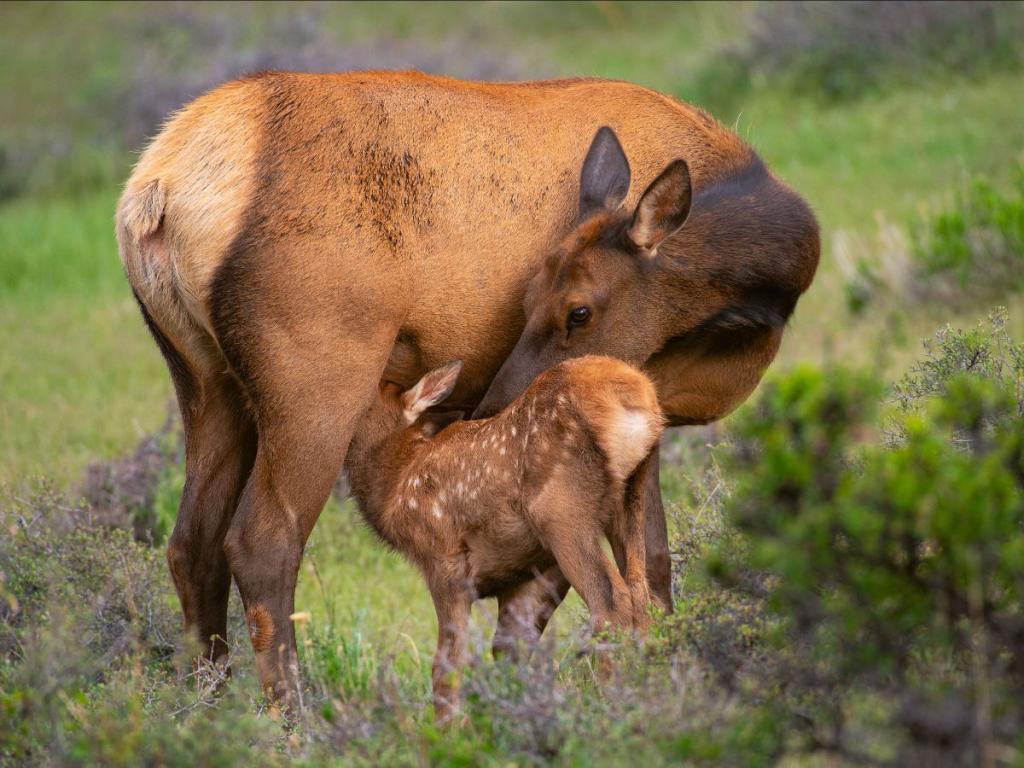Respect nature and mothers in the wild, leave young wildlife alone


Now through the end of June, wildlife will become more visible in backyards, open spaces, and on trails. Some young wildlife you may see include deer, elk, pronghorn, moose, rabbits, foxes, skunks, raccoons, bats, and birds. Colorado Parks and Wildlife (CPW) reminds the public to respect wildlife and their space, especially this time of the year.
Every spring, CPW and local parks receive increased office visits and calls from people who report they “rescued” young wildlife. Many people wrongly believe they are "helping" young animals by picking them up, bringing them to a CPW office, or even taking them home to feed them. People routinely orphan young wildlife by essentially kidnapping them from their natural environment.
In honor of Mother’s Day this weekend, a best practice to help mothers in the wild is to leave young wildlife untouched in their natural habitat so they can grow and thrive in the wild. Colorado is home to big game species, including elk, mule deer, moose, and bighorn sheep. Human disturbance can cause stress for wild animals and reduce females’ chances of successfully raising offspring.
How can humans help young wildlife?
- Do not feed or approach young wildlife.
- Enjoy wildlife from a safe distance.
- Be ‘bear aware’ to help reduce human-bear conflicts.
- Keep dogs leashed on trails to prevent them from chasing wildlife.
- If you see wildlife that appears sick or injured, leave it alone. Call your local Colorado Parks and Wildlife office and ask a trained wildlife officer for guidance.
CPW also urges the public not to feed wildlife on trails, in backyards, or on decks. Under Colorado law, feeding wildlife is illegal because it risks wildlife health and safety. Those in violation are subject to fines, and even worse, can cause the animal to become sick and die.
In addition to humans causing harm to wildlife, wildlife can also pose physical danger to humans. Wildlife is just that, wild, and can act in unpredictable ways. Animals such as elk, moose and deer with newborn calves and fawns can become aggressive to defend their young.
Other dangers of approaching and feeding young wildlife include exposure to rabies, Salmonella, fleas, ticks, and other parasites, bacteria, or viruses that may be present in or on the animal. Likewise, humans can inadvertently expose baby wildlife to diseases carried by people.
What should you do if you see a baby bird out of a nest?
Every year, people pick up baby birds, but the animal’s best chance of survival is to be raised by its parents. Highly pathogenic avian influenza (HPAI) is a significant concern for wild birds, especially waterfowl and scavenging birds, and also carries a possible risk to human health. Although rare, some strains of HPAI can infect people.
- If a nestling baby bird (eyes closed and featherless) has fallen from a nest that you can easily see and safely reach, it is okay to put the bird back into the nest, but you should wear gloves and a mask to prevent the transmission of diseases between you and the bird.
- If you find a fledgling bird (eyes open, feathered, can hop around but cannot fly) on the ground, do not pick up that bird. The parents will continue to care for it on the ground, and it will soon be able to fly. Keep cats inside to prevent them from killing birds.
- If you find a sick or dead bird, do not touch it. Please contact CPW to report the bird.
For more information, read the online resources below.
- Living with Wildlife
- Spring Wildlife Advice
- Avoid Conflicts with Wildlife
- Video: How to Avoid Moose Attacks
Colorado Parks and Wildlife provides additional resources to assist with media coverage and educate the public about why leaving young wildlife alone is important. The media toolkit includes:
- CPW and partner educational resources on how to keep wildlife wild
- Stock images of young wildlife
- Factsheets
- Social media copy
- Newsletter copy
Colorado Parks and Wildlife (CPW) is an enterprise agency, relying primarily on license sales, state parks fees and registration fees to support its operations, including: 43 state parks and more than 350 wildlife areas covering approximately 900,000 acres, management of fishing and hunting, wildlife watching, camping, motorized and non-motorized trails, boating and outdoor education. CPW's work contributes approximately $6 billion in total economic impact annually throughout Colorado.
DISCLAIMER: The Colorado Parks and Wildlife (CPW) website maintains press releases containing historical information that may no longer be accurate. Press releases are dated, which should be noted to determine whether the information provided is current. Please review our current regulations and brochures for up-to-date information.
 Bridget O'Rourke
Bridget O'Rourke